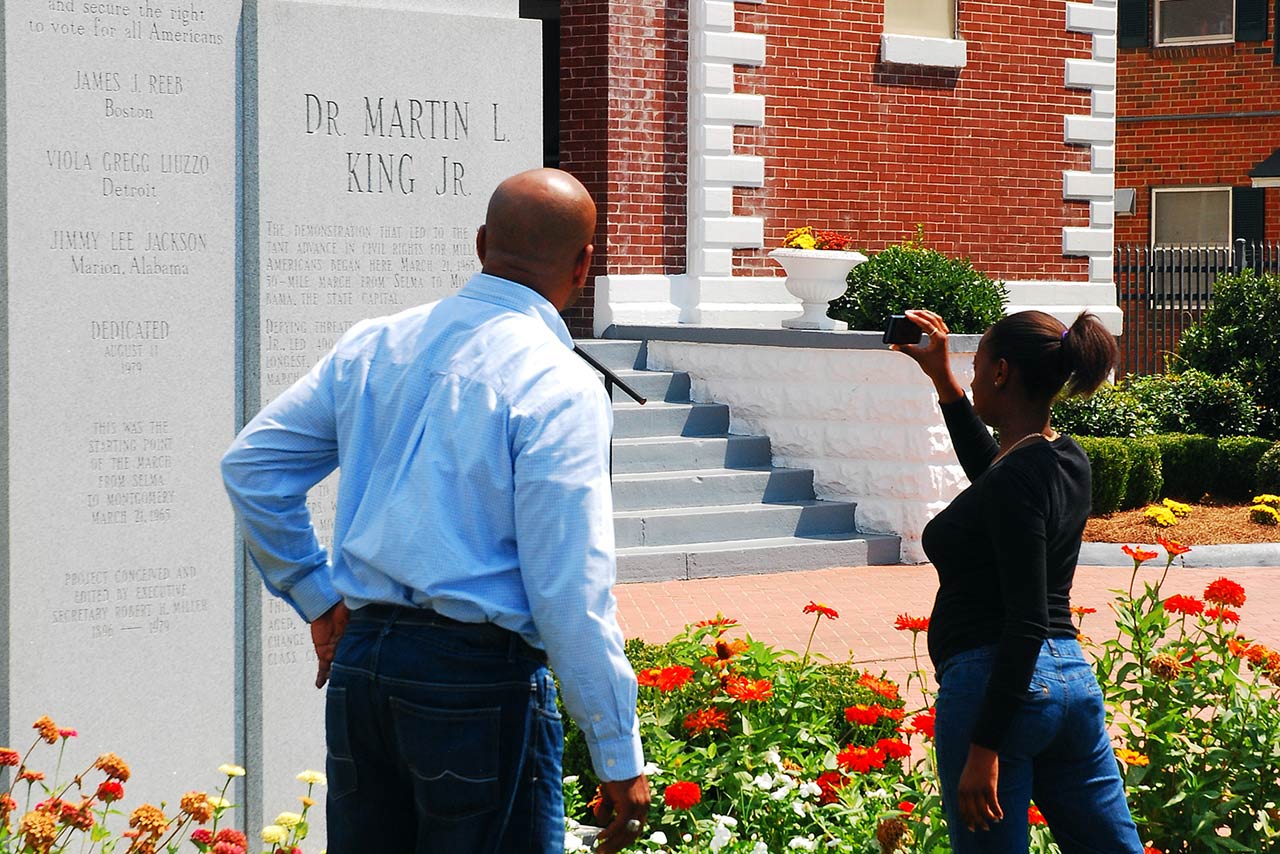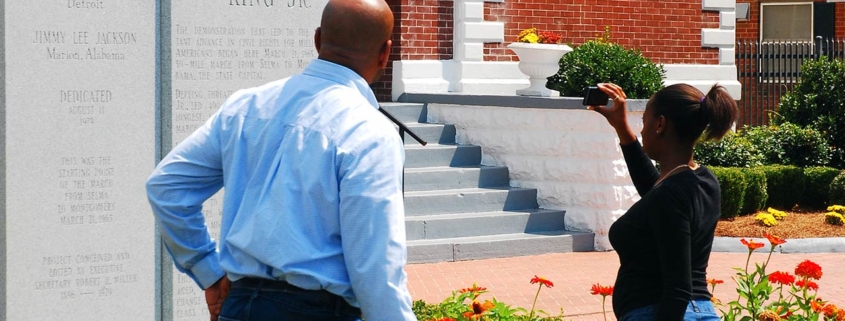Neighborhood News: For MLK Day, visit Marquette Park’s MLK Living Memorial

As a nation, we celebrate the legacy of civil rights leader Dr. Martin Luther King, Jr. annually on the third Monday in January. In 2023, we’ll be celebrating his life on Monday, January 16.
As a federal holiday, most area public schools, post offices, libraries, banks and government offices will be closed.
Throughout the city, there will be breakfasts, memorials, parades and other events commemorating MLK’s extraordinary, all-too-short, impactful life as a beacon of the civil rights movement.
Who Was Dr. Martin Luther King, Jr.? And why do we celebrate him?
As Brittanica.com tells us, Martin Luther King, Jr., (original name Michael King, Jr.,) was born January 15, 1929, in Atlanta, Georgia. A compelling and charismatic speaker, as well as a Baptist minister and author, Dr. King led the civil rights movement in the United States from the mid-1950s, as he organized the Montgomery Bus Boycott until his death by assassination on April 4, 1968, at age 39. He rose to national prominence as head of the Southern Christian Leadership Conference, which promoted nonviolent tactics and civil disobedience to achieve equality for African Americans, such as the March on Washington (1963), also known as the “I Have A Dream” speech, to achieve civil rights.
For his activism, he was awarded the Nobel Peace Prize in 1964, but Dr. King’s most enduring legacy is his leadership, which was fundamental to ending legal segregation of African Americans in the South and other parts of the United States. It should be noted that this fight continues today.
Dr. King’s Chicago Activism and Living Memorial
According to the WTTW documentary, ‘Power, Politics, & Pride: Dr. King’s Chicago Crusade:’ “In late 1965, Martin Luther King Jr. brought his crusade for civil rights to Chicago. He came at the invitation of the Chicago Freedom Movement, a coalition of 44 civil rights organizations working to end slums and improve living conditions for blacks in the city.”
He moved into an apartment in the 1500th block of S. Hamlin, and in light of his findings, Dr. King pushed for fair and open housing through rallies, boycotts, and grassroots lobbying for 17 months.
However, as the documentary notes, it was the marches in hostile white territory that forced the city to respond.
August 5, 1966
“In Marquette Park, on the Southwest Side, mobs of angry whites screamed obscenities and hurled rocks, bricks, and bottles toward the protesters,” it says. “King was struck in the back of the head with a rock, which knocked him to the ground.”
Somehow, Dr. King got back up and completed the march.
After recovering, the documentary reports that Dr King commented, “I have seen many demonstrations in the South, but I have never seen anything so hostile and so hateful as I’ve seen here today.”
The result was a “Summit Agreement” which King called “the most significant program ever conceived to make open housing a reality in a metropolitan area.” Today, much of the public housing and ‘redlining’ experienced in that era is gone.
Aftermath: A Living Memorial
Today, a living memorial stands in a plaza in Marquette Park, on the Southwest corner of South Kedzie Avenue and West Marquette Road where Dr. King marched. It’s free and open to the public.
According to the Chicago Park District’s website, the Martin Luther King, Jr. Living Memorialwas dedicated on August 5, 2016, to mark the march’s 50th anniversary. Artists Sonja Henderson and John Pittman Weber produced the artwork, which is composed of an oval-shaped plaza with three carved brick rectangular obelisks and a low seating wall. The carved brick material relates to the bungalows and other historic brick buildings of the area. Sculptural reliefs depict Dr. King and many prominent community members who marched that day, including Rabbi Robert J. Marx, founder of the Jewish Council on Urban Affairs, who urged his fellow rabbis to march, Reverend Willie Barrow, co-founder of Operation Push, and Imam Warith Deen Muhammed, a highly influential African American Muslim leader, theologian, activist, and scholar.
Alison Moran-Powers and Dean’s Team Chicago

